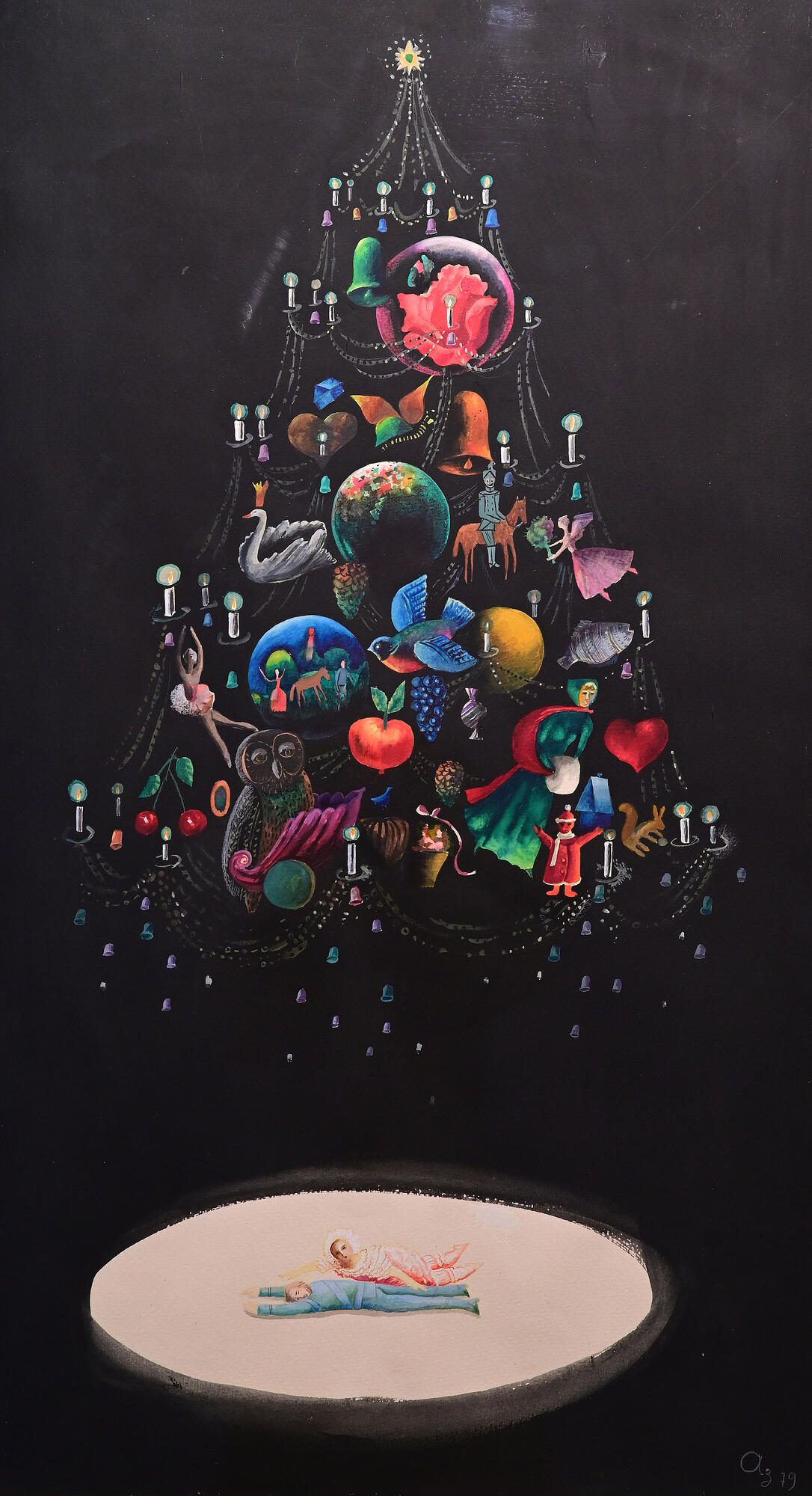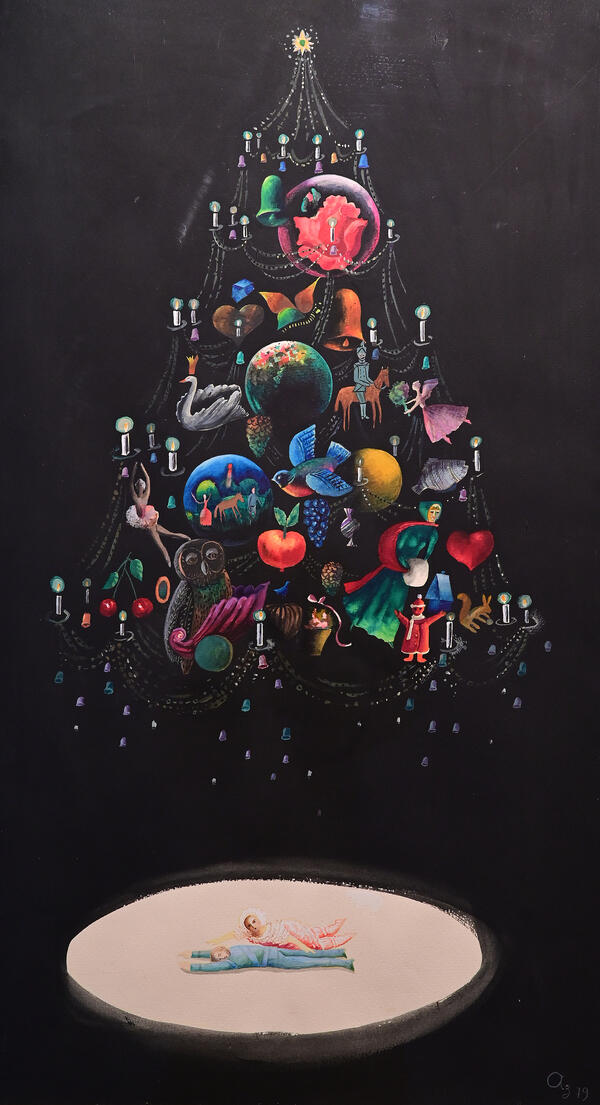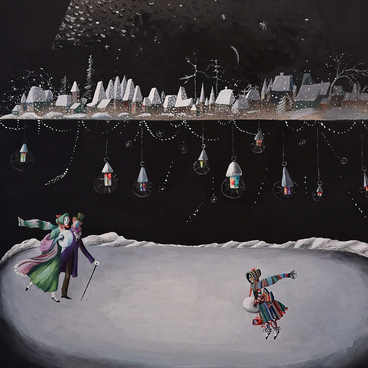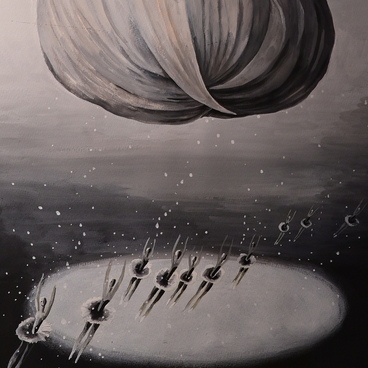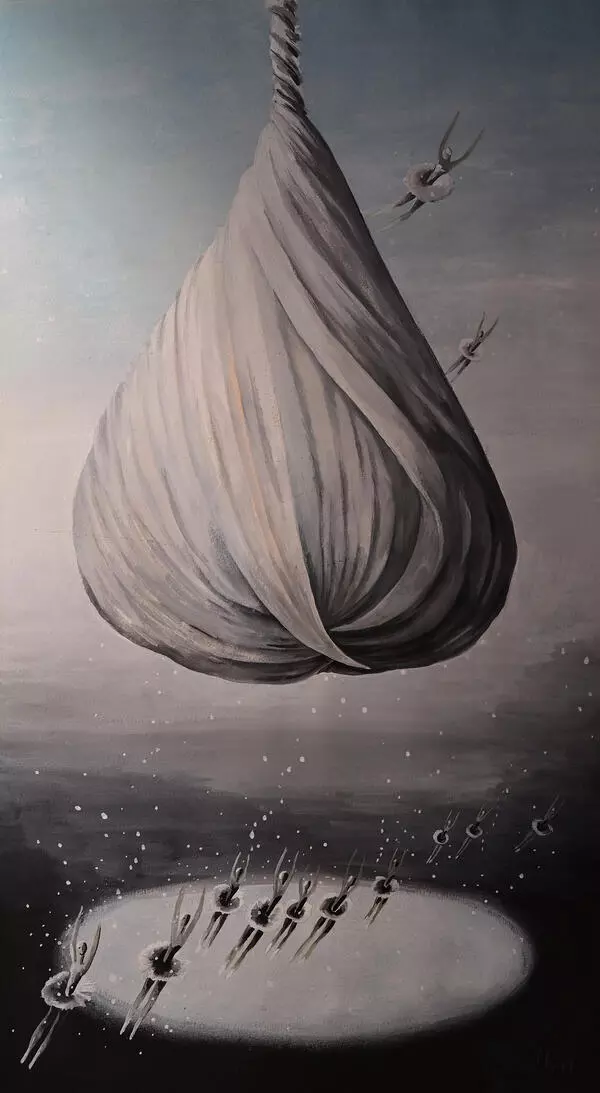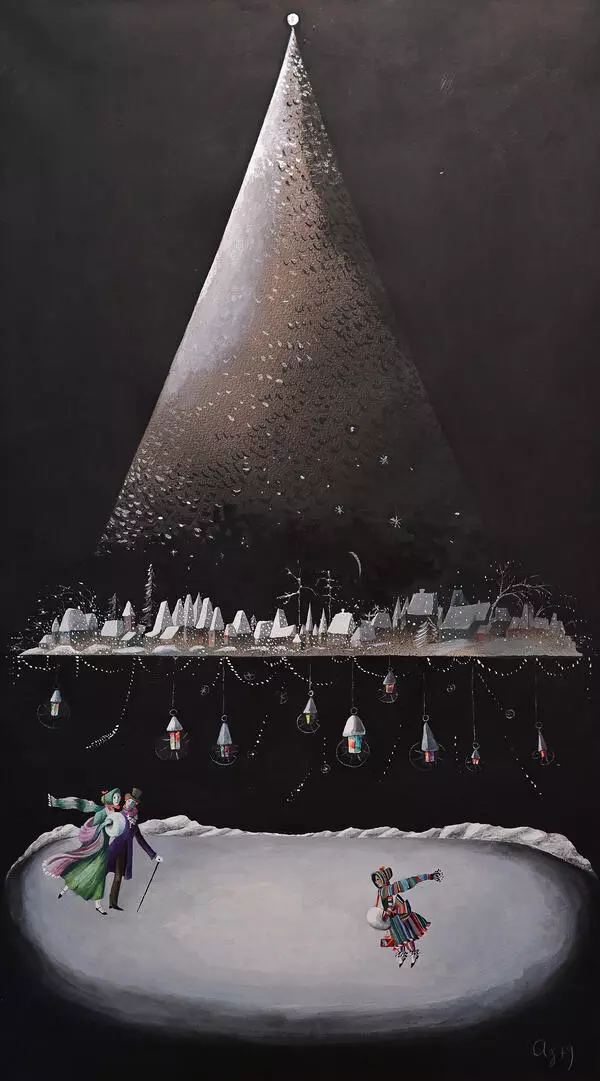The exhibition presents three sketches of scenery for Pyotr Tchaikovsky’s ballet “The Nutcracker”, which were created in 1979 by a St. Petersburg artist and set designer Marina Azizyan. The Tchaikovsky House-Museum acquired them from the Leningrad State Academic Maly Opera Theatre (MALEGOT) in September 1984, as evidenced by archival documents.
The artist made the sketch of the set design for the prologue of Act I on paper made in mixed technique. The work was created using gouache and watercolors in a restrained color palette. Against a dark background, Marina Azizyan depicted a Christmas tree decorated with all kinds of toys: bells, ballerina figurines, angels, swans, wooden soldiers, fruits and sweets, painted balls. Two kids are depicted on the floor: a boy in a blue pajama and a girl in a pink dress and a cap — the main heroine of the fairy tale Marie and her brother Fritz. Garlands of small bells descend from the tree.
The ballet begins on Christmas Eve, when medical adviser Stahlbaum gathers guests in his house. The owner himself, his wife, and children Marie and Fritz greet the guests. The children are eagerly waiting for gifts to appear under the decorated Christmas tree.
Pyotr Tchaikovsky was commissioned to create a one-act opera and a two-act ballet in 1890 by the Directorate of the Imperial Theaters. The composer, who was at the peak of his popularity after the successful premieres of the ballet “The Sleeping Beauty” and the opera “The Queen of Spades”, had to compose the music for the so-called combined performance: the opera and ballet were to be performed on the same evening in December 1891. The director of the Imperial Theaters Ivan Vsevolozhsky and the famous choreographer Marius Petipa suggested to choose the plot of Hoffmann’s fairy tale ‘The Nutcracker and the Mouse King’ for the ballet. The latter already had a draft libretto, which, however, changed a lot during the working process.
Soon after the work on The Nutcracker started, Marius Petipa resigned. The production was handed over to the second choreographer of the Mariinsky Theater Lev Ivanov, who had previously staged the ‘Polovtsian Dances’ in the opera ‘Prince Igor’ by Alexander Borodin and dances in Nikolai Rimsky-Korsakov’s opera “Mlada”.
The artist made the sketch of the set design for the prologue of Act I on paper made in mixed technique. The work was created using gouache and watercolors in a restrained color palette. Against a dark background, Marina Azizyan depicted a Christmas tree decorated with all kinds of toys: bells, ballerina figurines, angels, swans, wooden soldiers, fruits and sweets, painted balls. Two kids are depicted on the floor: a boy in a blue pajama and a girl in a pink dress and a cap — the main heroine of the fairy tale Marie and her brother Fritz. Garlands of small bells descend from the tree.
The ballet begins on Christmas Eve, when medical adviser Stahlbaum gathers guests in his house. The owner himself, his wife, and children Marie and Fritz greet the guests. The children are eagerly waiting for gifts to appear under the decorated Christmas tree.
Pyotr Tchaikovsky was commissioned to create a one-act opera and a two-act ballet in 1890 by the Directorate of the Imperial Theaters. The composer, who was at the peak of his popularity after the successful premieres of the ballet “The Sleeping Beauty” and the opera “The Queen of Spades”, had to compose the music for the so-called combined performance: the opera and ballet were to be performed on the same evening in December 1891. The director of the Imperial Theaters Ivan Vsevolozhsky and the famous choreographer Marius Petipa suggested to choose the plot of Hoffmann’s fairy tale ‘The Nutcracker and the Mouse King’ for the ballet. The latter already had a draft libretto, which, however, changed a lot during the working process.
Soon after the work on The Nutcracker started, Marius Petipa resigned. The production was handed over to the second choreographer of the Mariinsky Theater Lev Ivanov, who had previously staged the ‘Polovtsian Dances’ in the opera ‘Prince Igor’ by Alexander Borodin and dances in Nikolai Rimsky-Korsakov’s opera “Mlada”.
